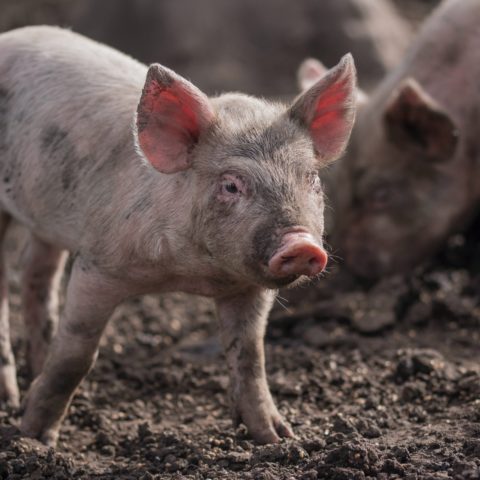
Although average market pig weights have improved in recent decades thanks to lean growth and feed efficiency, recent Purdue Extension research reveals that producers still make market animal sorting mistakes that increase sort loss and reduce the number of pigs sent at optimal market weight for processing.
In its study, Purdue Extension looked at the impact of pig marketing errors through a simulation that calculated data for 4,000-head wean-to-finish barns with pigs that were marketed at 169 days of age (25%), 179 days of age (25%), and 193 days of age (50%). During that time, there was a 7-day interval for the timing of marketing, so marketing ages ranged between 155.5 to 211.5 days and carcass weights were 167 to 240 pounds.
There were two types of pig marketing errors that were examined in the research:
- Body weight estimation errors (BWEE), which refer to obvious market animal errors resulting from the visual estimation of body weight
- Pigs not visually evaluated (PNVE), which means pigs have been marked for marketing before being visually estimated
As a result of these errors, some pigs end up not being marketed at the optimal time and carcasses are discounted because they are too heavy or too light.
Purdue’s study determined that depending on accuracy of sorting, the sort loss of pigs was minimized at around 205 pounds of carcass weight. In addition, when the rate that pig producers estimated market animals based on BWEE and PNVE evaluations increased, the sort loss increased exponentially. In fact, these less accurate sorting methods caused a financial loss of $2.50 to $4.55 per pig more than when more accurate sorting methods were utilized.
Mitigating Market Animal Sort Loss
Purdue Extension’s research shows that pork producers should adopt strategies in order to ensure that their market animals are being sorted in the most accurate and efficient ways, which will decrease their carcass weight fluctuations while increasing their daily returns. Some of the suggestions that Purdue makes include spending more time evaluating the weight of each pig, using 3-D cameras to estimate the animals’ weight, and comparing the weight of a few sentinel pigs to others being marketed.
Osborne Weight Watcher™Growth Management System Technology
Another important recommendation the study makes is to use technologies that sort pigs in marketing pens based on what their current weight is. In order to help producers reduce sort loss and ensure optimum wean-to-finish efficiency, Osborne offers an innovative growth management system that is specifically designed for finishing pigs in large pens so producers can increase market value. The Osborne Weight Watcher™ Growth Management System allows users to closely make packers’ matrixes and cut sort losses through sorting based on pig weight and targeted feeding based on the group’s median weight. This allows farmers to produce market animals at the ideal market weight while controlling growth and reducing the cost of feed.
Osborne’s leadership in the development of automated pig management equipment – including sorting scales – is trusted by countless producers across the world. To learn more about how the original ACCU-ARM Survey Scale and Weight Watcher can automatically monitor and sort your finishing pigs for market, please contact us today.



